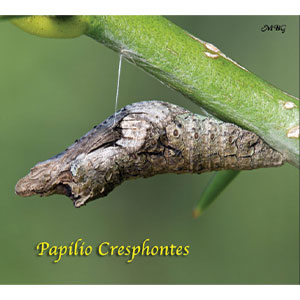The Hands of Winter
By Trish Beckjord
Through the quiet lake and river, frozen fingers send a shiver. Reaching outward with aggression, winters hands now take possession.
– Excerpt from The Hands of Winter by Mark Hayes and John Parker, Heritage Music Press
It seems winter has arrived early this year and is likely to stay no matter how much I hope for a reprieve. This impolite action has caught many of us unawares, myself included. Now, no matter how unlikely, I wait for a slightly warmer day to get my leaves raked into the garden and my lawn cut one last time.
Who would think to do this in November? My neighbor for one, and the other on my opposite side; mowing and blowing their front yards within an inch of their lives – even in the dark – hurrying to get this year’s leaves to the curb for city pick-up.
I, on the other hand, continue to resist. I think about the life that might be protected through the winter in that litter layer, the cover it offers to the soil and the denizens that call it home, the nutrients they add to the soil layer as they decompose. I find I have come to welcome snow (most of the time!), and think of it and the fall leaves as a protective blanket needed by plants, insects and wildlife alike.
Tidy is strictly a human construct. Life in the winter landscape may not look tidy but it is always intentional. From the chrysalis of an overwintering butterfly like the Eastern Swallowtail that blends so well with winter stems and leaves to the caterpillar of the Baltimore Checkerspot burrowing into the leaf litter, to the Mourning Cloaks that overwinter as adult butterflies sheltering under loose tree bark such as is found on our native Shagbark Hickory, many forms of life are making use of our natural resources over the winter.
Bernd Heinrich describes the intricacy of a gray squirrel’s nest in his book winter world as “…a functionally crafted thing…” The nest he was able to closely examine was almost 12 inches wide and included outside layers of red oak twigs with their leaves on and multiple layers of single, green oak leaves in places up to 26 layers thick. Clearly these homes are wonders of deliberate construction rather than the helter-skelter piles they often look like! According to Heinrich, the leaf layers of the nest he was able to disassemble were built in a watertight, interlocking shingle around an inner layer of finely shredded ash and poplar leaves a little more than an inch and a half thick. What a cozy place to curl up!
It seems to me that the use of the oak leaves in the outside layers is quite deliberate; much better than maple. With their leathery texture, it seems these leaves from one of our most important native trees last longer and offer the best insulating properties available for home construction! Another reason to plant an oak if there is room for just one tree in your yard!
Thinking about the cold and how we resist it, resent it and complain about, was also in my mind when I recently heard reference to a book titled The Right to be Cold. A right to be cold? The very title rang a discordant note in my mind. The full title is The Right to Be Cold: One Woman’s Story of Protecting Her Culture, the Arctic and the Whole Planet (View Talk). It is written by Sheila Watt-Cloutier, an Inuk woman from the traditional Inuit ice-based hunting culture that lives in the Arctic. She traveled by dogsled for the first ten years of her life. It is a story of the changing climate and the need for action. It is also a moral tale of how our actions, which are so often short-sighted and self-focused are threatening the very survival of numerous cultures around the world that are dependent upon their relationship to the sea. Elsewhere coastal areas of Virginia, Florida and New Orleans, as well as world treasures such as Venice, Italy, are experiencing or planning for high tide flooding (State Tech Magazine Article, Scientific American® Article and Forbs Article.)
So much of what I write about each month is how our actions, our decisions, impact the world around us; from the microcosm of the butterfly chrysalis to the home of the squirrel, to the survival of a native people’s culture. We are all connected. May we all recognize this and act accordingly.
I wish you all a blessed Thanksgiving holiday!

Would you ever think this will become a beautiful butterfly? 
…like this?! Eastern Giant Swallowtail, Papilo cresphontes Photo: Mark Kluge, taken in May 2015, Norris Woods, St. Charles 
Wouldn’t you love to see this lovely in your garden?! Baltimore Checkerspot, Euhydryas phaeton Photo: Nick Block, June 2009, Bluff Spring Fen, Elgin, IL 
It’s caterpillar curls up and overwinters in leaf litter! Baltimore Checkerspot, Euhydryas phaeton Photo: Kyle Jones 
Believe it or not, this beautiful butterfly overwinters as an adult in tree crevices and under bark. They will look for early spring wildflowers for sure! Photo: Mark Kluge, taken in June 2015, Crabapple Lake, Morton Arboretum 
A grey squirrel nest – or drey – is multi-layered and well constructed to keep out wet and cold. Ever wonder how they get in? The entrance apparently faces the trunk to avoid exposure to weather. Image from Naturally Curious by Mary Holland. 
A traditional Inuit drum dance. The effects of the changing climate are threatening the survival of this unique culture.

